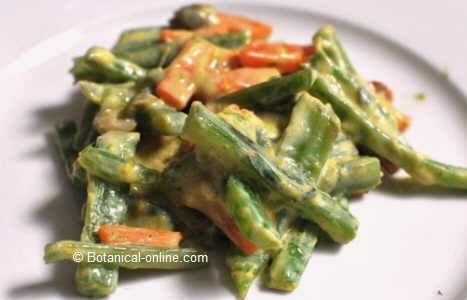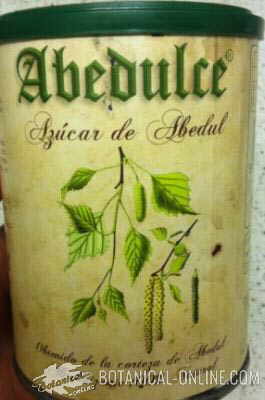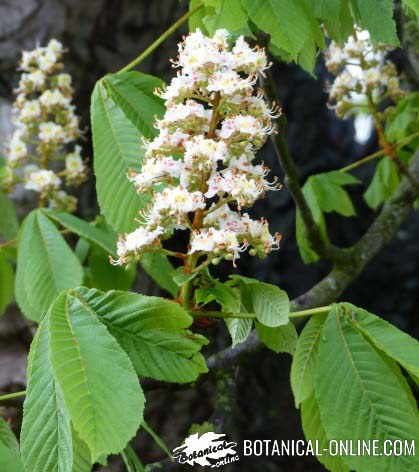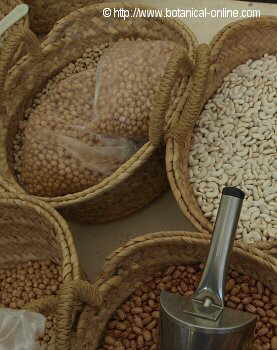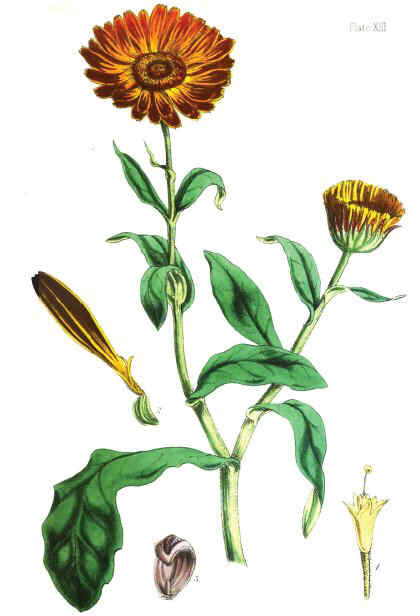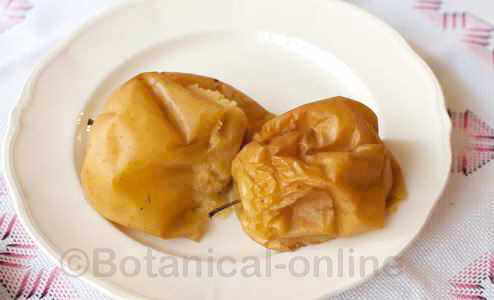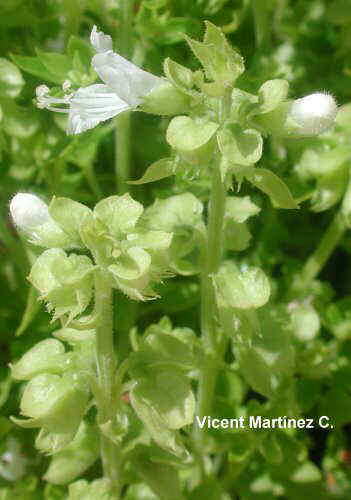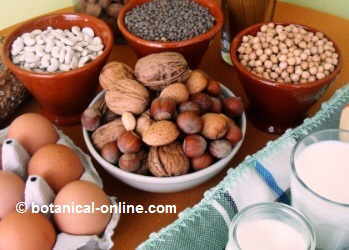Contents
- 0.1 CHARACTERISTICS OF GOLDEN SEAL
- 0.2 Habitat: Were to find golden seal?
- 0.3 Description of golden seal
- 0.4 Components of golden seal
- 1 MEDICINAL PROPERTIES OF GOLDEN SEAL
- 1.1 A plant on the verge of extinction
- 1.2 TRADITIONAL USES OF GOLDEN SEAL TO CURE DISEASES
- 1.3 Golden seal: an effective remedy for the treatment of wounds, varicose veins, cuts or ulcers
- 1.4 Remedies for internal use with gold seal
- 1.5 Preparations for external use with golden seal
- 1.6 Golden seal: a plant to cure diseases of the urinary system
- 1.7 Other applications of golden seal
- 1.8 Golden seal supplements
- 1.9 INDUSTRIAL PROPERTIES OF THE GOLDEN SEAL
- 1.10 Is goldenseal safe?
CHARACTERISTICS OF GOLDEN SEAL
Common English name: Golden seal, goldenseal, orange rood, yellow puccoon, ground raspberry, Indian paint, Eyebalm (The name is due to the bright yellow color of the rhizome and to the fact that it has a series of marks that make it look like the old stamps that were used to seal the documents)
Common name in other languages:
– Spanish / Castellano: Sello de oro
– Catalan / Català: Segell d’or
– Italian / Italiano: Idraste
– French / Français: Hydraste du Canada
– German / Deutsch: Kanadische Orangenwurzel, Kanadische Gelbwurz, Goldsiegelwurzel
– Polish/ Polski: Gorzknik kanadyjski
– Turkish / Türkçe: Altınmühür
– Русский / Russian: Желтоко́рень
Scientific name of golden seal: Hydrastis canadensis L.
Family: Buttercup family (Ranunculaceae)
Habitat: Were to find golden seal?
Native to Canada and the eastern United States, it grows in humus-rich lands in the shade of forests or at the edge of forests.
It is increasingly scarce in its natural habitat, being sought with much eagerness for its therapeutic properties.
It is cultivated intensively in North America, mainly in the states of Washington and Oregon, and in Canada, in the region of Ontario. There are also crops in Europe.
Description of golden seal

Drawing of the plant
Perennial herb of the Ranunculaceae family up to 30 cm.
Stem cylindrical, erect, hirsute, born of a horizontal yellowish, gnarled rhizome, up to 10 cm thick.
Golden seal leaves are born in pairs at the end of a foliar stem, very wrinkled, palmately-lobulated, with 5 lobes and with well highlighted hairs. Lower leaves much larger till 22 cm in length and petiolated; superior ones, sessile.
This plant produces a solitary flower of white-greenish color, without petals, although provided with numerous stamens with very prominent yellow anthers.
Fruits in red berry with a single seed.
It flowers over the month of April and its inedible fruits, similar to a raspberry, is ripe over the month of July.
Components of golden seal
- Acids: ascorbic and chlorogenic (Roots)
- Alkaloids: hydrastine, berberastine, berberine and canadine. (Rhizome)
- Starch (Roots and Rhizome)
- Sucrose (roots)
- Fiber (Roots)
- Inositol (Plant)
- Vitamins: Vitamin C, Vitamin B1 (Thiamin), Vitamin B2 (Riboflavin), Vitamin B3 (Niacin) (Roots)
- Minerals: aluminum, calcium, chromium, cobalt, iron, magnesium, manganese, phosphorus, potassium, selenium, silicon, sodium, zinc (Roots)
MEDICINAL PROPERTIES OF GOLDEN SEAL
Golden seal has been considered one of the main medicinal plants used in phytotherapy in North America. Many times it has been called “the ginseng of the poor” because of the wide variety of applications that both plants have had in curing numerous diseases and the fact that it was very easy to get.
It is known that Native Indians used it practically for everything and there is an extensive bibliography that refers to the therapeutic use of this herb in uses as diverse as antiseptic, antifebrile, astringent, aperitif, tonic, hemostatic, insect repellent, antimalarial, antithyphilitic, antigoneorreic, Antithyroid, etc.
A plant on the verge of extinction |
| This wide use has produced a frantic search of the wild specimens which, consequently, has led to this species practically to its extinction. However, it is not currently difficult to access it because there are intensive crops that take advantage of their curative potential for the pharmaceutical industry to produce medicines and standardized extracts from its rhizome and other parts of the plant that can solve a wide variety of bodily anomalies. It is important, on the other hand, to avoid the consumption of fresh plant, often of dubious origin, both because it may not be adequately prepared and to avoid the final disappearance of a protected species. |
TRADITIONAL USES OF GOLDEN SEAL TO CURE DISEASES
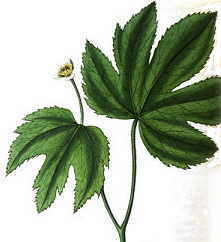
Drawing of the plant
Golden seal: an effective remedy for the treatment of wounds, varicose veins, cuts or ulcers
These properties come mainly from the richness of alkaloids contained in its rhizome. Hydrastine, berberine, berberastine and hydrastinin have many properties, including vasoconstrictive capacity (ability to decrease dilated blood vessels) and hemostatic hemostatic capacity (ability to stop blood outflow)
These properties, which were already frequently exploited by the ancient Cherokee, have again been modernly recognized and used in the treatment of the following conditions:
Remedies for internal use with gold seal
- Excess of blood through the vagina: It has been proven its ability to stop excessive vaginal bleeding (metrorrhagias) as well as other irregularities of i premenstrual syndrome, such as dysmenorrhea.
- In addition to stopping excessive vaginal bleeding in women, the mentioned alkaloids also protect the female vagina from possible inflammations. (Take capsules or make decoctions of golden seal rhizome powder, sold in pharmacies or herbalists, according to the patient’s leaflet. Never exceeding the indicated dose)
- Varices: For the treatment of inflammations of the veins of the legs (varices) or possible ulceration when the varicose veins get worse. (Take capsules or make decoctions of rhizome powder of golden seal)
- Hemorrhoids: Similar application can obtain when there is swelling of the veins of the rectum. The use of this plant favors the recovery of the normal size of the anal veins and, at the same time, it prevents their bleeding. (Take capsules or make decoctions of rhizome powder of golden seal)
Preparations for external use with golden seal
The haemostatic properties of alkaloids, combined with the vulnerary properties that its richness in zinc, vitamin C and sucrose provide, make this plant suitable in the external treatment of skin diseases:
- Mouth ulcers: they can be treated with golden seal dye application (Perform three daily applications on ulcers). Apply the same treatment for cuts or wounds.
- External injuries: Also its power to stop the blood outflow has been applied in the treatment of nose bleeds, bleeding in skin ulcers, cuts, wounds, etc. (Take capsules or make decoctions of rhizome powder of gold seal sold in pharmacies or herbalists according to the conditions of the leaflet without ever exceeding the indicated dose)
- Eczemas: Also the topical application of golden seal tincture can help cure the eczema.
- Varicose veins: In the case of varicose veins or varicose ulcers, the application of golden seal ointment on the affected area reduces the inflammation and heals the wounds, preventing them from becoming infected. (Apply ointment sold in pharmacies or herbalists on the affected area.) This ointment usually has in its composition other plants such as horse chestnut.
- Blows: Also its anti-inflammatory properties are suitable for the treatment of blows. External application of a tincture or a little cream of golden seal extended across the affected area will help reduce inflammation, reduce pain, and prevent bruising.
- Hemorrhoids: Suppositories made with this plant can be used to treat hemorrhoids.
- Vaginal infections: Washing with the infusion of the dry plant helps to cure the infections of the vagina.
- Conjunctivitis: This same preparation, if allowed to cool, can be used for the treatment of conjunctivitis and inflammation of the eyelids (Blepharitis)
- Sore throat: In cases of throat irritated by tonsillitis, the astringent properties of berberine and berberastine are used to perform gargles that may help to solve the problem. (Gargling with the resulting liquid of 1 teaspoon of dry plant per glass of water)
| Golden seal is suitable for the stomach |
| The beneficial properties of this plant in stomach diseases are due to its ability both to promote the digestion of food by increasing the production of secretions of the pancreas and liver, and to prevent the development of stomach ulcers. This property is due to the action of the alkaloids berberine, berberastine and hydrastine together with vitamin C. It is believed that these components, with anti-inflammatory and bactericidal properties, protect the intestinal mucous and prevent the appearance of lesions or or stimulate their regeneration. (Take capsules or make decoctions of rhizome powder of golden seal, sold in pharmacies or herbalists according to the conditions of the package leaflet. |
Golden seal: a plant to cure diseases of the urinary system
Its anti-inflammatory and bactericidal properties have been used in the treatment of diseases caused by infectious agents in the urinary tract. Supplements of this plant may be suitable for inflammation of the bladder or cystitis. (Take capsules or make decoctions of rhizome powder of golden seal sold in pharmacies or herbalists according to the conditions of the leaflet)
Other applications of golden seal
In addition to the above, the products of this plant are sold freely, with dubious effectiveness, in many preparations for the treatment of other conditions such as constipation, allergy, anorexia, etc.
Golden seal supplements
They can be found in pharmacies and specialized stores prepared as capsules, tinctures, creams or ointments, dry plant powder or gelatin wrappers that can be used with totality provided that the directions in the package leaflet are followed and according to the indications of the practitioner or health specialist.
It should not be forgotten that its content in alkaloids makes it a very potent substance, which, improperly used, can be toxic.
Fundamentally the use of the preparations of this plant currently focus on the following medicinal properties.
INDUSTRIAL PROPERTIES OF THE GOLDEN SEAL
- Colorant: Industrially, because of its berberine content, it is used for the production of yellow dye. For this reason this plant in English, in addition to golden seal, is also known as yellow paint root
- Cosmetics: Golden seal is part of numerous preparations for the cosmetics industry, especially in the treatment of the skin.
Is goldenseal safe?
This plant contains very potent alkaloids that can cause toxicity when the indicated doses are exceeded. Among its toxic properties are its abortive capacity, so it should not be given to pregnant women or infants.
Cases of intoxication have occurred in animals and in people due to the excessive use of preparations made with this plant. Among the symptoms described, we have irritations of the intestinal mucosa with diarrhea, vomiting and ulcer formation. High doses may cause convulsions and heart rhythm disturbances.
It may be toxic due to accumulation of alkaloids. Therefore, preparations should not be taken with this plant for more than 20 days, taking breaks of at least 15 days.
It is not advised to use it with anticoagulants and anti-inflammatories. Its use in this case could produce an excessive fluidity of the blood when combined with other plants with similar properties.
It is not advisable to use it with people who suffer from hypertension.
Although it is one of the most fashionable medicinal plants today and the most used as a home remedy in the United States, it is advisable to only take this plant under the supervision of a specialist.
![]() More information on golden seal toxicity, contraindications and side effects.
More information on golden seal toxicity, contraindications and side effects.

